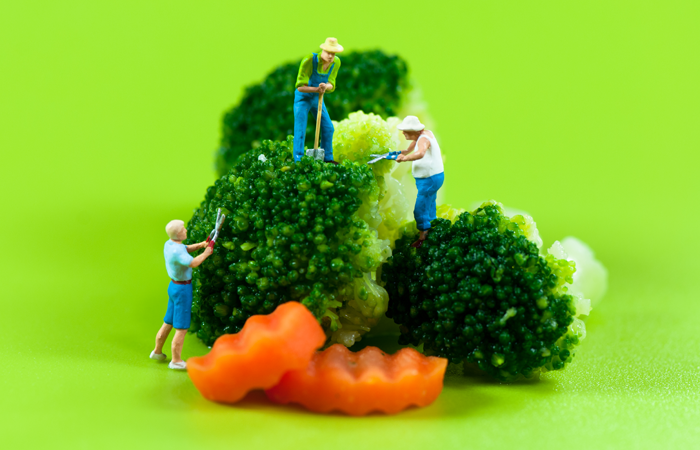เทคโนโลยีการบรรจุเครื่องดื่ม
By: ฐานข้อมูลอุตสาหกรรมบรรจุภัณฑ์
สำนักงานเศรษฐกิจอุตสาหกรรม
Packaging Industrial Intelligence Unit
Office of Industrial Economics
เทคโนโลยีการบรรจุเครื่องดื่ม
1. ระบบการบรรจุขณะเย็น: ภายหลังที่เครื่องดื่มที่ผ่านการบรรจุเย็น ต้องเก็บรักษาที่อุณหภูมิประมาณ 0-5 องศาเซลเซียส ตลอดการกระจายสินค้าและการขนส่ง เพื่อเก็บรักษารสชาติของเครื่องดื่มไว้ได้
2. ระบบการบรรจุร้อน: เป็นการบรรจุที่ได้ผ่านกระบวนการฆ่าเชื้อมาแล้ว เหมาะอย่างยิ่งสำหรับน้ำผลไม้ที่มีความเป็นกรด โดยปกติจะฆ่าเชื้อด้วยวิธีพาสเจอร์ไรซ์ที่อุณหภูมิประมาณ 92-95 องศาเซลเซียส และบรรจุที่อุณหภูมิ 82 องศาเซลเซียส
3. ระบบการบรรจุแบบปลอดเชื้อ: ความแตกต่างของการบรรจุแบบปลอดเชื้อ คือ มีการฆ่าเชื้อในตัวสินค้าหรือน้ำผลไม้ แยกออกจากตัวบรรจุภัณฑ์ที่ทำการฆ่าเชื้อในระหว่างการบรรจุและปิดผนึกตัวบรรจุภัณฑ์ โดยสินค้าที่ได้จะสามารถวางขายได้โดยไม่ต้องแช่เย็น
ภาชนะบรรจุสําหรับบรรจุเครื่องดื่ม
1.แก้ว: เป็นวัสดุที่มีความเฉื่อยในการทําปฏิกิริยา จึงเหมาะสําหรับเครื่องดื่มที่ต้องการเก็บรักษาที่ยาวนาน
2. กระป๋อง: ปัจจุบันมีการเปลี่ยนรูปแบบของกระป๋องจากเดิมที่เป็นทรงกระบอกธรรมดาให้เป็นรูปทรงเหมือนขวดแก้ว แต่ยังนิยมใช้ในเทศกาลหรือโอกาสพิเศษของผลิตภัณฑ์เครื่องดื่มมากกว่าการผลิตเพื่อจําหน่ายโดยทั่วไป
3. พลาสติก: สามารถขึ้นรูปได้หลากหลายรูปแบบ ไม่มีข้อจํากัดทางด้านปริมาณการบรรจุ สามารถเลือกความใสหรือความขุ่นได้ตามความต้องการ และราคาค่อนข้างต่ำเมื่อเทียบกับแก้วหรือกระป๋อง
4. กล่องกระดาษแข็ง: เริ่มใช้ในการบรรจุนมเป็นประเภทแรก ปัจจุบันโครงสร้างของภาชนะบรรจุกล่องได้พัฒนาขึ้น ทําให้สามารถบรรจุเครื่องดื่มอื่นๆ เช่น น้ำผลไม้ ชา หรือกาแฟ เป็นต้น
5. ถุงใส่ในกล่อง: มักใช้กับน้ำผลไม้ส่งออกที่มีปริมาณมาก เริ่มแพร่หลายสู่อุตสาหกรรมอื่นๆ และยังนิยมใช้ในอุตสาหกรรมจําพวกเคมี
Beverage Filling Technology
1. Cold Filling: After cold filling, the beverage must be kept at a temperature of 0-5 degree Celsius throughout the distribution and transportation in order to preserve the beverage in good taste.
2. Hot Filling: It refers to the filling of liquid food that has been pasteurized and appropriate for acidic fruit juice. The beverage is generally pasteurized between 92-95 degree Celsius and introduced into the bottle at 82 degree Celsius.
3. Aseptic Filling: The difference is that aseptic is a processing technique where the food or beverage is sterilized outside the container and placed in previously sterilized containers which is then sealed with a sterilized closure in an aseptic environment. Hence, finished products filled under sterile conditions can put on sale with no refrigeration needed (shelf-stable).
Beverage Packaging
1. Glass: Glass is virtually inert and impermeable, that is suitable for long shelf life beverages.
2. Cans: Nowadays, the shape of the cans has been changed from the original cylinder to the shape of a glass bottle mostly for the use in the feasts or special occasions of beverage production rather than for general distribution.
3. Plastic: The advantage of plastic container is that they are available in a variety of forms with unlimited in filling volume. They can be produced either crystal clear or opaque as required, considering that the cost is relatively low compared to glass or cans.
4. Cartons: Its first use was for milk packaging. Over recent years, the structure of carton has been developed to many other types suitable for drink items, such as juice, tea, coffee, etc.
5. Bag-in-box: This type of packaging offers a great solution for exporting high volume of fruit juice. This kind of packaging is later widespread in many industries including the chemical industry.









